Monday, February 18th 2019

Modding a 2x 140 mm All-in-One CPU Watercooler onto the AMD Radeon VII
Reddit user CarbonFireOC wasn't happy with the temperatures he's been seeing on his Radeon VII, and decided he wanted watercooling. Unfortunately, that early since product release no GPU waterblocks are available for the Radeon VII. What he figured out was that the waterblock of EVGA's CLC 280 all-in-one cooler will fit. This cooler, which is made by Asetek and licensed by EVGA is designed for Intel & AMD motherboards and many similar variants exist from vendors like Fractal Design, NZXT and others.
While performing such a mod on a $700 graphics card is not for the faint-hearted, it shows that with a little bit of creative ingenuity you can achieve amazing results without wasting top dollar.
His 24/7 stable settings on Radeon VII are 2122 MHz core, 1265 mV, and 1252 MHz memory, resulting in a 3DMark Firestrike graphics score of around 33,000. Even at such a high voltage, the watercooling keeps temperatures very low at 40°C GPU, 60°C Hotspot.
Source:
Reddit
While performing such a mod on a $700 graphics card is not for the faint-hearted, it shows that with a little bit of creative ingenuity you can achieve amazing results without wasting top dollar.
His 24/7 stable settings on Radeon VII are 2122 MHz core, 1265 mV, and 1252 MHz memory, resulting in a 3DMark Firestrike graphics score of around 33,000. Even at such a high voltage, the watercooling keeps temperatures very low at 40°C GPU, 60°C Hotspot.
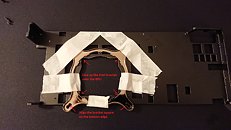
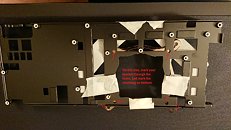
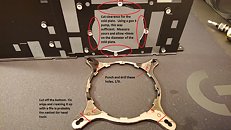


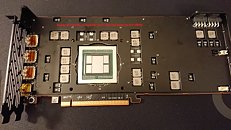
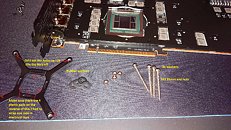
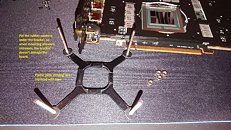
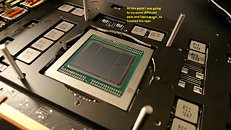

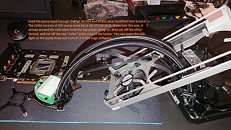
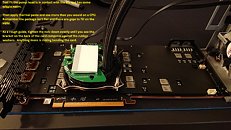
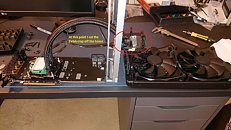
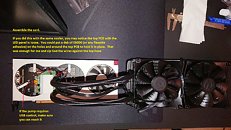
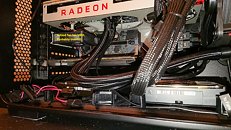

26 Comments on Modding a 2x 140 mm All-in-One CPU Watercooler onto the AMD Radeon VII
What's the power consumption like? VRM temp? Hotspot temp?
AMD cards are much more overclock friendly than Nvidia cards, there are simply far less limits. Any Turing or Pascal card has a rather limited Power Limit range and basically a hardcoded Voltage limit around 1.09V. This will not get you far and subverting this is not trivial.
Point proven. :-)
Bonus points for the modding effort of course, but still, painful.
As for your comment directly- I agree there too. Plus it'd give you the ability to vent that heat right outside the case instead of keeping it tucked inside the case.
They can do an AIO version. Vega64 and Fury X proved it. I doubt any other AIB will do it. So AMD needs to step to the plate and actually do it.
Wonder if when they release their brand new GPU, they will surprise us all.... We can but dream :)
*I can't promise because all of the amd hardware sucks more power from the powersupply :)
The power draw is an irrelevance as it's not an everyday thing. All modders push the limits somewhere - it's a bit naive to harp on about power when you're dissecting an expensive gfx card.
If he try to bench at 2270 1.31V he will beat heavily OC 1080 Ti for sure. Not counting that performance from future drivers will widen the gap further.
Looks like there is tons of OC potential on Radeon 7 if you can properly cool it. This remind me of Kepler days where you can squeeze 40-50% more performance from selected GK110 with watercooling.
The few times I have tried Chill, it tends to either introduce judder/stutter when altering moving speed or does not give a large benefit. It is cool tech but not one I would prefer to use during gaming.
Minimum FPS limit is the cool tech part and tends to be problematic for me. This lowers FPS when there is not much going on on screen.
We need to remember that RTX2080 FE runs ~1900Mhz AVG while gaming, so Radeon VII @1900MHz/1050Mhz will perform very nice without OC.
The reason I asked is that there's one significant story that I haven't seen in print as yet regarding what we are seeing these days regarding the fps gains obtained in overclocking GFX cards. Starting with the 2xx series, AMD stared aggressively overclocking their cards in the box. When the 290x came out, it was designated the new king ... it lost the throne to the 780 Ti a week later. However, when both cards were manually overclocked, the 780 retained 2nd place and the 290x slipped to third. With the 980 Ti and Fury X looked competitive outta the box, but the 980 Ti OC'd 27-30% fps improvements above reference and the Fury X was in single digits. The 10xx series wasn't quite as OC friendly but still a large gap between the two camps.
With the AIB 2xxx series cards, we are seeing much lower OCs both in how much more we get outta the box and how much more we get above reference. The factory OC'd cards are gaining around 8% above their "in the box" condition, same as the Radeon VII. We are also seeing the FE "A series" GPUs being used as the new "reference". Compared to **that** reference, the AIB's typical gamer cards have ranged from 112.1% OC (EVGA X Ultra) to 116.5% (MSI Gaming X Trio). I couldn't help wondering whether with 2xxx, they mighta tweaked up the OCs a bit more than in the past given that the 1xxx to 2xxx improvements generation to generation were less impressive,
Another thing that I found intersting was that in the OC test, the 8 cards tested, 7 fell into vendor's gamer line and 1 in the premium, "bawlz to the wall" card. The 7 ranged rather tightly, from 218.0 fps OCd to 226.6 .... however the premium card (Lightning Z) jumped to 236.7. I'm curious as to what's happening here, recent iterations of the Lightening, Classified and Matrix had fallen well short of expectations and Im curious as to what improvement(s) gets credit for that jump. It is wporth noting that all 7 "gamer' cards tested has Micron Memory (T61K256M32JE-14:A) which ranged from 2005 to 2065 OC'd (EVGA was only 1960) and the Lightnng has Samsung (K4Z80325BC-HC14) which hit 2090. The Lightning had an OC'd core tho of only 2100, Only 2 cards were lowewr. The MSI Trio was 2085 and outside the Lightning had the highest OC'd fps; The EVGA X Utra was 1960 and finished last other than the FE .
Part of the reason you are seeing various results with different (slightly less) clocks is because something isn't stable (memory ECC is taking over for example) or it is dropping bins and the reviewer is reporting a peak clock or a clock that isn't sustained due to power limits or temperatures which will obviously vary with card as each has a different power limit set for its model.
It has been well know for generations that overclocking is more of a silicon lottery than 'card level' as to what overclocks more.
AMD has power limit that can be subverted but not voltage limit as such. It least I do not remember Vega having one and temperature/power is what remains the important limit.When it comes to Nvidia, Boost 3.0 and Boost 4.0 are a thing. Reference clocks are far below any clock a Pascal or Turing card does with reasonable cooler on it. To put it simply, cards will increase clocks until they hit one of the limits - temperature, power, voltage. Well, there is a max number of bins it can boost but that is generally enough to reach to ~1900MHz and something else will limit it first.
AMD has a boost system that is essentially similar.
Average gamer could think that by the graph Non-FE RTX 2080 beats Vega VII and so after looking Nvidia RTX 2080 page they will see that there is RTX 2080 FE with higher clock so it must be even better -right? wrong!.
Also I see that Nvidia's RTX 2080 Founders Edition really boost very close to AIB's Extreme models so the benchmarks results are very close, so IMO NVIDIA is really competing it's partners.